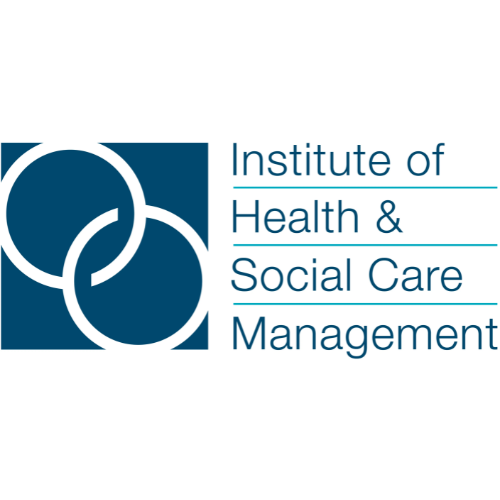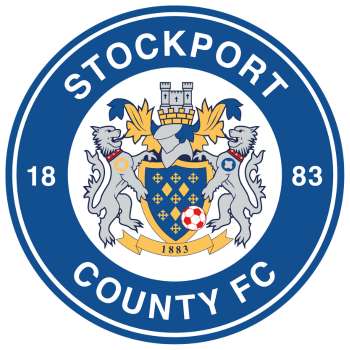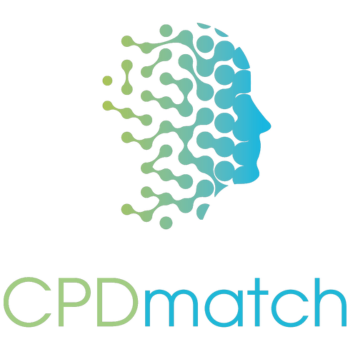
The myocardial and neuronal infectivity of SARS-CoV-2 and detrimental outcomes
Ernest Herbert, Dominique Fournier, Waleed Mohammed Al-Shaqha, and Mohamed Chahine
Abstract: The epidemiological outbreak of severe acute respiratory syndrome coronavirus 2 (SARS-CoV-2), alias COVID-19, began in Wuhan, Hubei, China, in late December and eventually turned into a pandemic that has led to over 3.71 million deaths and over 173 million infected cases worldwide. In addition to respiratory manifestations, COVID-19 patients with neurological and myocardial dysfunctions exhibit a higher risk of in-hospital mortality. The immune function tends to be affected by cardiovascular risk factors and is thus indirectly related to the prognosis of COVID-19 patients. Many neurologi- cal symptoms and manifestations have been reported in COVID-19 patients; however, detailed descriptions on the preva- lence and characteristic features of these symptoms are restricted due to insufficient data. It is thus advisable for clinicians to be vigilant for both cardiovascular and neurological manifestations to detect them at an early stage to avoid inappropri- ate management of COVID-19 and to address the manifestations adequately. Patients with severe COVID-19 are notably more susceptible to developing cardiovascular and neurological complications than non-severe COVID-19 patients. This review focuses on the consequential outcomes of COVID-19 on cardiovascular and neuronal functions, including other influ- encing factors.
Key words: SARS-CoV-2, consequential outcomes, cardiovascular manifestations, neuronal complications, COVID-19 variants, treatment overview.
Résumé : La flambée à caractère épidémiologique du virus SARS-CoV-2 (pour « severe acute respiratory syndrome coronavi- rus 2 »), alias COVID-19, a commencé à Wuhan, Hubei, en Chine, à la fin du mois de décembre, et s’est par la suite transfor- mée en une pandémie qui a entraîné la mort de plus de 3,71 millions de personnes avec plus de 173 millions de cas d’infection à l’échelle mondiale. En plus des manifestations respiratoires, les patients atteints de la COVID-19 présentant des dysfonctionnements neurologiques et myocardiques affichent un risque accru de mortalité intrahospitalière. La fonc- tion immunitaire tend à être affectée par des facteurs de risque cardiovasculaires et est donc indirectement liée au pronos- tic des patients atteints de la COVID-19. On a rapporté de nombreux symptômes et manifestations neurologiques chez les patients atteints de la COVID-19. Cependant, la description détaillée de la prévalence et des éléments caractéristiques de ces symptômes est restreinte en raison de données insuffisantes. Il est donc de mise que les cliniciens soient vigilants quant aux manifestations cardiovasculaires et neurologiques afin de les déceler à un stade précoce en vue d’éviter une prise en charge inappropriée de la COVID-19 et d’aborder les manifestations adéquatement. Les patients atteints de la forme grave de la COVID-19 sont notamment plus susceptibles de subir des complications cardiovasculaires et neurologiques que les autres patients atteints de la forme moins grave de la maladie. Cet article de synthèse est centré sur les résultats consécutifs à la COVID-19 quant aux fonctions cardiovasculaires et neurologiques, y compris d’autres facteurs influents. [Traduit par la Rédaction]
Mots-clés : SARS-CoV-2, résultats consécutifs, manifestations cardiovasculaires, complications neurologiques, variants de la COVID-19, aperçu des traitements.
Introduction
Background
The outbreak of the novel coronavirus, categorized as severe acute respiratory syndrome coronavirus 2 (SARS-CoV-2) by the International Committee on Taxonomy of Viruses (Chan et al. 2020), was officially recognized as a global pandemic by the World Health Organization (WHO) on 11 March 2020. Although the true circumstances surrounding the outbreak of COVID-19 in
Wuhan have yet to be clarified, even with the recent investiga- tion by WHO, it is clear that COVID-19 has come to stay and that the entire world has to live with it whether we like it or not. The vaccines developed by various pharmaceutical companies are the solutions for combatting and containing it now and in the future. The COVID-19 pandemic is a global public health threat that requires careful monitoring, and its many consequences for human health and well-being need to be recognized. Although the clinical symptoms of COVID-19 are mostly centered on the
Received 14 July 2021. Accepted 19 August 2021.
- Herbert and D. Fournier. ERDOMO LLP, England and Wales, United Kingdom.
W.M. Al-Shaqha. AlImam Mohammad Ibn Saud Islamic University, Riyadh, Kingdom of Saudi Arabia.
- Chahine.* CERVO Brain Research Center, Quebec City, QC, Canada; Department of Medicine, Faculty of Medicine, Université Laval, Quebec City, QC, Canada. Corresponding author: Mohamed Chahine (email: mohamed.chahine@phc.ulaval.ca).
*Mohamed Chahine served as an Associate Editor at the time of manuscript review and acceptance; peer review and editorial decisions regarding this
manuscript were handled by Danielle Jacques.
© 2021 The Author(s). This work is licensed under a Creative Commons Attribution 4.0 International License (CC BY 4.0), which permits unrestricted use, distribution, and reproduction in any medium, provided the original author(s) and source are credited.
Can. J. Physiol. Pharmacol. 99: 1128–1136 (2021) dx.doi.org/10.1139/cjpp-2021-0390 Published at www.cdnsciencepub.com/cjpp on 21 September 2021.
Fig. 1. The impact of SARS-CoV-2 on the respiratory, cardiovascular, and neurological systems. Upon viral entry via angiotensin-converting enzyme 2 (ACE2) receptors, it induces a cytokine storm in the lung and lower respiratory airways, it invades neurons causing major neurological disorders, and it also impacts the cardiovascular system in various ways such as myocarditis, stroke, heart failure, and cardiac arrhythmias.
respiratory system, a wide-ranging clinical spectrum has emerged, including stroke, venous thromboembolism, pulmonary embolism, cardio-cerebral infarction, and neuronal complications (Bikdeli et al. 2020; Eskandarani et al. 2021). In addition to the classical symptoms of COVID-19, many patients have also experienced addi- tional signs and clinical manifestations of isolated vasculopathy. The dilemma surrounding COVID-19 transmission comes from both symptomatic and asymptomatic sources, with healthcare workers caring for the patients on the frontline at the greatest risk of con- tracting the virus.
Stroke is now implicated as a common and potentially devas-
tating complication for COVID-19-infected patients. It has been reported that 2%–6% of patients hospitalized with COVID-19 have experienced an acute cerebrovascular event (Ellul et al. 2020). One in 20 patients diagnosed with COVID-19 (Amruta et al. 2021) experi- ence ischemic stroke, while a few cases of hemorrhagic incidents have also been reported (Spence et al. 2020). COVID-19 may cause strokes via a number of different mechanisms, including coagul- opathy, myocardial damage linked to cerebral embolism, and desta- bilization of pre-existing atheroma plaque (Trejo-Gabriel-Galan 2020).
One in 50 of severely affected and non-hospitalized patients with COVID-19 experience a stroke (Taquet 2021). COVID-19 increases the risk of stroke, possibly by disturbing regular coagu- lation. Blood clotting is beneficial when someone is bleeding, but COVID-19 causes platelets to go into overdrive. COVID-19 infections can also result in pulmonary embolisms that have led to the death of some patients. Clots can not only form in the lungs, they can also form in the heart or the brain and cause a stroke. This is why a sizeable number of post-COVID-19 patients may require care in the weeks or months, and possibly longer, following recovery and why patient follow-up to determine the long-term outcomes of their recovery process is so important. Post-COVID-19 recovery dis- orders include anxiety, depression, and even psychiatric problems.
There are a growing number of case reports on patients encoun- tering protracted symptoms, neurologic and otherwise, following
the acute phase of COVID-19. These patients are colloquially known as “long haulers”. Our understanding of COVID-19 is still evolving, and new symptoms are emerging in various forms that pose a threat to healthcare practitioners.
Here, we review gaps in our knowledge regarding COVID-19 infections and their impact on the cardiovascular (CV) and neuro- logical systems, as illustrated in Fig. 1.
COVID-19-associated stroke
Ischemic strokes in COVID-19 patients often present with a multi-territorial arterial distribution, an embolic pattern, and hemorrhagic transformation (Siegler et al. 2020; Escalard et al. 2020; John et al. 2020). Younger patients with no known risk fac- tors for stroke may be characteristically affected with a large ves- sel occlusion that may have resulted in initial hospitalization during their COVID-19 infection but subsequently led to in-hospital mortality (Oxley et al. 2020; Majidi et al. 2020; Alkhaibary et al. 2020; Altschul et al. 2020). Cardiac embolism or paradoxical embo- lism and a hypercoagulable state resulting from COVID-19 may be associated with such presentations of strokes. Unexpected ischemic strokes involving the corpus callosum, and frequently the posterior circulation, have been associated with COVID-19 (Sparr and Bieri 2020; Bonardel et al. 2020).
An increase in the incidence of hemorrhagic transformation after ischemic infarcts has been observed in COVID-19 stroke patients. It has been reported that almost 1 in 20 patients diag- nosed with COVID-19 experience a stroke thereafter (Pittams et al. 2021). The relationship between stroke and infectious dis- eases is complex. The neurological sequelae of stroke and infec- tious diseases may overlap, resulting in diagnostic uncertainty, and a prior stroke is a poor prognosticator in COVID-19 infections (Trejo-Gabriel-Galan 2020). Several processes acting synergisti- cally could be contributing factors to stroke in patients with COVID-19 rather than a single mechanism in isolation. Without a proper understanding of the pathophysiology of strokes associated with an infectious disease, it would be a daunting task to optimize a management plan when two processes occur simultaneously.
Coagulopathy of COVID-19-infected patients
Severe COVID-19 is commonly complicated by coagulopathy, and disseminated intravascular coagulation (DIC) may be associated with the majority of deaths. Long-term bed rest and hormone ther- apy may increase the risk of venous thromboembolism in severe COVID-19. Expert consensus in China recommends the use of anti- coagulants for severe COVID-19 patients; however, the efficacy of anticoagulants has not been validated (Wenhong et al. 2020). The International Society on Thrombosis and Haemostasis has proposed a new category to identify an earlier phase of sepsis-associated DIC known as “sepsis-induced coagulopathy” (SIC). It has been con- firmed that patients who meet the diagnostic criteria of SIC benefit from anticoagulant treatments.
In COVID-19 patients, the dysfunction of endothelial cells induced by the infection leads to the generation of excess throm- bin, as well as fibrinolysis shutdown, which indicates that they are suffering from a hypercoagulable state. In addition, hypoxia, which occurs in severe COVID-19, may trigger thrombosis by increasing blood viscosity and upregulating a hypoxia-inducible transcription factor-dependent signaling pathway (Gupta et al. 2019). An anticoagulant therapy was proposed early on in China to improve the outcomes of severe COVID-19 but no particular inclusion or exclusion criteria have been forthcoming to date. Anticoagulants were used sparingly in the early stage of the out- break but were increasingly used later on as the virus spread around the world.
It has been reported that COVID-19 infections are associated with increased coagulation abnormalities, including more ele- vated levels of fibrinogen and D-dimers, which have been linked to higher morbidity and mortality (Zhou et al. 2020; Wang et al. 2020). A correlation between interleukin 6 and fibrinogen points to a link between inflammatory changes and coagulopathy (Connors and Levy 2020). Also, the co-manifestation of SIC and DIC has been encountered in severe cases as well as in non-survivors who pre- sented hyper-fibrinolytic consumptive DIC and bleeding diathesis.
Neurological manifestations of COVID-19-infected patients
COVID-19 infections can manifest with predominant neurologi- cal symptoms, which prompted a call for adopting specific measures to prevent contamination among patients and health professionals. The three major groups of neurologic manifesta- tions observed by Varatharaj et al. (2020) are cardiovascular dis- eases (CVDs), impaired consciousness and confused states, and peripheral nervous system disorders.
Over one-third of COVID-19 patients have been reported to have experienced neurological symptoms, which appear for the most part within the first few days of the overt clinical symp- toms, whereas strokes tend to occur 2–3 weeks later. Cerebral involvement is thought to be associated with a poor prognosis and a worse disease course (Li et al. 2020). In the acute phase, neu- rologic symptoms are usually mild and transient and may involve headache, nausea, vomiting, confusion, hyposmia and (or) hypo- geusia, and musculoskeletal symptoms. As of now, it is too early to envisage the long-term neurologic outcomes of COVID-19 based on the symptoms exhibited by patients during the acute phase; however, it should not be ruled out that more severely infected COVID-19 patients may have an increased risk of devel- oping cognitive impairment, which may be associated with cortical or subcortical neurodegeneration as well as vascular mechanisms. The etiopathogenesis of central nervous system (CNS) manifesta- tions of COVID-19 may be attributed to comorbidities that drive poor long-term outcomes in affected patients.
The pathophysiological mechanisms involved in the neurologi- cal manifestations of COVID-19 have not been studied in very great detail; however, potential mechanisms may include (i) viral
entry via angiotensin-converting enzyme 2 (ACE2) receptors (Fig. 1) into the endothelium that lines the blood capillaries in the brain,
- invading neurons due to a breached blood-brain barrier caused by a cytokine storm, and (iii) spread by synaptic transfer from che- moreceptors and mechanoreceptors in the lungs and lower respira- tory airways (Jasti et 2021).
Although ACE2 has been reported to be an entry way for SARS- CoV-2, other proteins such as neutrophil-1 receptor (NRP-1) may participate in these first steps of the virus infection. As both the spike protein and the pro-nociceptor agent vascular endothelial growth factor A (VEGF-A) bind to NRP-1, a recent study tested the hypothesis that this binding may impede VEGF-A/NRP-1 signaling (Moutal et al. 2021). Indeed, these authors showed that neuronal firing due to VEGF-A signaling is inhibited by the spike protein and by an NRP-1 inhibitor. The authors used a rat chronic pain model to confirm that interfering with VEGF-A/NEP-1 signaling results in antiallodynic effects. These authors further suggested that this analgesic effect may explain the high disease transmis- sion in asymptomatic individuals.
The neuro-COVID-19 complex can be defined as normal orien- tation and the arousal of symptoms commonly associated with COVID-19 such as headache, anosmia, ageusia, chemesthesis, vertigo, presyncope, paresthesias, cranial nerve abnormalities, ataxia, dysautonomia, and skeletal muscle injury. Interestingly, neurological symptoms and conditions may precede typical re- spiratory symptoms by several days or even be the only indica- tors of COVID-19 infection in otherwise asymptomatic carriers. Due to limited data, this information might not be available for individual symptoms.
The three systems where neurological symptoms and mani- festations can exert their impact include the CNS, the peripheral nervous system, and the musculoskeletal system (Leonardi et al. 2020). Biological and clinical observations indicate that COVID-19 can be divided into three main categories based on presumed underlying mechanisms. The first mechanism involves the neu- rological consequences of pulmonary disease and associated sys- temic diseases such as sepsis, stroke, encephalopathy, systemic inflammatory response syndrome, and multi-organ failure. The second includes the direct invasion of the CNS by the virus, while the third consists of post-infection immune-mediated complica- tions related to the likelihood of being affected by Guillain-Barre syndrome (Harapan and Yoo 2021).
As the majority of reports emphasize with respect to respira-
tory symptoms, the prevalence of neurological sequelae from COVID-19 infections may be underestimated. Based on various documents, neurological symptoms of COVID-19 may be non- specific, and it is thus advisable that clinicians be on alert for neurological manifestations at the early stage of COVID-19 infec- tions to mitigate inappropriate management.
The meta-analysis of Nazari et al. 2021 indicated that the mor- tality rate of COVID-19 cases associated with the CNS is 10.47%, which is much higher than that of the general infected popula- tion (Borges do Nascimento et al. 2020). Such a high mortality rate is an indication of how important it is to thoroughly monitor CNS manifestations in COVID-19 patients. Recent studies have reported that COVID-19 infections can exacerbate the formation of blood clots in blood vessels, paving the way for an increased risk of cerebrovascular diseases in COVID-19 patients (Table 1). As the brain is nourished by a network of blood vessels, this could be an important signal for cerebral vasculature investigations of CNS symptoms in COVID-19-affected individuals (Hess et al. 2020). Understanding the CNS aspects of COVID-19 infections is crucial and of immense benefit to both patients and clinicians for navigat- ing around the complicated nature of this brutal virus.
Patients have at least one neurological symptom during the
acute phase period of COVID-19 infections, with headaches being the most common at 72%, followed by hyposmia and (or) anosmia (40%), and hypogeusia and (or) ageusia (41%). Additionally, non-
Table 1. Cerebrovascular diseases in COVID-19 patients (modified from Lou et al. 2021).
| Types of CVD | Symptoms at COVID-19 Onset | Medical History (n; %) | Therapeutic Outcomes |
| Acute ischemic stroke | No typical symptoms of COVID-19, | Hypertension (51 out of 214 COVID-19 | Patient with cerebral |
| (AIS)–Cerebral hemorrhage | sudden hemiplegia as the first | patients with CVD) (23.8%) | hemorrhage: died; patient |
| symptom | Diabetes (30) (14.0%) | with AIS: critical | |
| Cardiocerebrovascular disease (15) (7.0%) | |||
| Malignancy (13) (6.1%) | |||
| CKD (6) (2.8%) | |||
| AIS | Fever and myalgias | Hypertension | N/A |
| Aplastic anemia | |||
| Splenectomy | |||
| AIS | Cough (5) | Hypertension (4) | ICU (2) |
| Shortness of breath (5) | Diabetes (2) | ||
| Fever (4) | AF (2) | ||
| Tachypnea (2) | Malignancy (2) | ||
| Myalgia (1) | Ischemic heart disease (2) | ||
| Malaise (1) | Hypercholesterolemia (1) | ||
| Fatigue (1) | |||
| Loss of appetite (1) | |||
| AIS | Fever (3) | Hypertension (3) | Bedridden (2) |
| Cough (3) | Diabetes (1) | Discharged (2) | |
| Shortness of breath (1) | |||
| AIS | Fever (2) | Hypertension (4) | Deteriorated (4) |
| Respiratory distress (1) | Dyslipidemia (3) | ||
| Shortness of breath (1) | Diabetes (1) | ||
| Dry cough (1) | Carotid stenosis (1) | ||
| No typical symptoms of COVID-19 (1), | CKD (1) | ||
|
altered mental status and sudden hemiplegia as the first symptoms |
|||
| AIS | Cough (2) | Diabetes (2) | Discharged (3) |
| Lethargy (2) | Hypertension (1) | ICU (1); transferred to | |
| Headache (1) | Hyperlipidemia (1) | stroke unit (1) | |
| Chills (1) | |||
| Fever (1) | |||
| Patient 1: Subarachnoid hemorrhage | Fever, cough and arthralgia | None | Discharged |
| Patient 2: AIS with hemorrhagic | Hemiparesis and aphasia | N/A | N/A |
| transformation | |||
| Multiple cerebral infarctions | Fever (3) | Hypertension (3) | Critical (3) |
| Dyspnea (3) | Diabetes (2) | ||
| Cough (2) | Stroke (2) | ||
| Headache (2) | Coronary artery disease (1) | ||
| Diarrhea (1) | Malignancy (1) | ||
| Fatigue (1) |
neurological symptoms such as cough, dyspnea, and fever increase the risk of having at least one neurological manifestation (Table 2). The identification of these symptoms could be helpful at the early stage, especially in areas where molecular testing is limited or not available, as in Peru and other similar regions of the world (Carcamo Garcia et al. 2021).
Although the incidence of CNS manifestations is likely much higher, documented CNS symptoms such as encephalopathy, stroke, seizure, and syncope are relatively common, affecting at least 13% of patients with COVID-19. Among the manifestations of the CNS spectrum, incidences of altered mentation or stroke con- fer a higher risk of mortality above and beyond that of the sever- ity of the underlying illness (Eskandar et al. 2021).
Variants of COVID-19
Viruses generally acquire mutations over time, giving rise to new variants, and COVID-19 is no exception. When a new variant emerges and appears to be transmitted in a population, it can be categorized as an “emerging variant”. SAR-CoV-2, the virus
responsible for COVID-19, has many variants, some of which are believed to be of peculiar importance due to their potential for increased transmissibility, increased virulence, and reduced effectiveness of vaccines (Briggs 2021; Kupferschmidt 2021). The notable variants of SARS-CoV-2 as well as their respective coun- tries of emergence are highlighted in Table 3.
Multiple variants of SARS-CoV-2 are currently circulating glob- ally. Several new variants emerged in the fall of 2020. In the United Kingdom (UK), a new variant of SARS-CoV-2 (known as 201/501Y.V1, VOC 202012/01, or B.1.1.7) emerged with a large num- ber of mutations (Table 3). This variant has since been detected in a number of countries around the world, including the United States (USA). In January 2021, scientists from the UK reported evi- dence showing that the B.1.1.7 variant may be linked to an increased risk of death compared to other variants (Horby et al. 2021); how- ever, more studies are required to confirm this finding.
In South Africa, another variant of SARS-CoV-2 (known as 20H/ 501Y.V2 or B.1.351) emerged independently of B.1.1.7. Cases associ- ated with this variant have been detected in many countries
Table 2. Observed neurological and psychological complications of COVID-19 (modified from Mukaetova-Ladinska and Kronenberg 2021; Rifino et al. 2021).
Neurological Psychological Cerebrovascular diseases Acute stress disorder Ischemic stroke Adjustment disorder
Hemorrhagic stroke Anxiety (including separation and generalized anxiety disorder)
Transient ischemic attacks Depression and suicidality Cerebral venous thrombosis Dysphoria Peripheral neuropathies Acute manic episode
Guillain-Barre syndrome Eating disorders (including increased restricting, binge eating, purging, and exercise behaviors) Critical illness polyneuropathy Insomnia
Altered mental status Panic attacks
Encephalitis Phobias
Myelitis Obsessive behavior
Headache Acute psychosis (including reactive psychosis)
Seizures Alcohol/drug withdrawal due to lockdown
Syncope Medically unexplained symptoms Movement disorders
Other Irritability
Table 3. Major variants of SARS-CoV-2.
|
Locations |
Date |
Pangolin Lineage |
Next Strain Clade |
Mutations |
Transmissibility |
Virulence |
Spread |
| UK | Jan 2020 | B.1.1.7 | 20I/501Y.V1 | N501Y, 69-70del, P681H | 74% higher | 64% more lethal | International |
| Nigeria | Mar 2020 | B.1.1. 207 | — | P681H | No evidence of change | No evidence of change | International |
|
United States
Denmark |
June 2020
Sep 2020 |
B.1.429 B.1.427 — |
20C/S: 452 R
Not registered |
14205 V, D1183Y, S13I, W152C, L452R Y453 F, 69-70deltaHV |
= 20% higher
— |
Under investigation
— |
International
Likely extinct |
| South Africa Japan | Oct 2020 Dec 2020 | B.1.351 P.1 |
20H/501Y.V2 20J/501Y.V3 |
N501Y, K417N, E484K N501Y, E484 K, K417T |
~50% higher ~152% higher |
No evidence of change More lethal | International International |
|
Brazil UK Nigeria |
Dec 2020 | B.1.525 | 20C | E484 K, F888L | Under investigation | Under investigation | International |
Note: Table is modified from “Lineage descriptions” (https://cov-lineages.org/lineages.html; “SARS-CoV-2 Variant Classifications and Definitions” (https://www.cdc. gov/coronavirus/2019-ncov/cases-updates/variant-surveillance/variant-info.html, Centers for Disease Control and Prevention). contiguous to South Africa as well as elsewhere. This variant was first reported in the USA at the end of January 2021.
In Brazil, a variant of SARS-CoV-2 (known as P.1) emerged. It was first identified in four travelers from Brazil who were tested at a routine screening at Haneda Airport, on the outskirts of Tokyo, Japan. This variant has 17 unique mutations, including three in the receptor binding domain of the spike protein. It was also detected in the USA at the end of January 2021.
These variants are being studied to gain a better understanding of their ease of transmission and the efficacy of currently approved vaccines against them. New updates on the virology, epidemiology, and clinical features of these variants are rapidly emerging.
CV events associated with COVID-19 infections
As stated above, a COVID-19 cell-surface protein, namely the spike protein, binds to the ACE2 receptor in the lungs, which is also highly expressed in the heart (Tsivgoulis et al. 2020), allow- ing the virus to penetrate inside the cell to replicate. This binding interferes with the physiological role of angiotensin II. Cardiac- related injury in COVID-19 patients has been associated with ACE2 receptor dysregulation, an imbalanced immune response resulting in cytokine storm syndrome, hypoxia leading to respi- ratory dysfunction, and adverse treatment reactions. COVID-19 infections can have a direct effect on the heart or a secondary effect due to a cytokine storm (Kochi et al. 2020). They can also be complicated by decompensated heart failure (HF), myocarditis, acute myocardial infarction, and cardiac arrhythmias, including atrial fibrillation (Fig. 1).
The existence of underlying comorbidities such as cardiac dis- orders and diabetes escalate the risk of mortality among COVID-19 patients, especially those with pre-existing CVDs who have the highest risk of experiencing severe COVID-19, which could lead to a worse clinical outcome (Gupta and Misra 2020). A large propor- tion of COVID-19 mortality is influenced by CVDs.
Several reports have linked CVDs to severe COVID-19, however, the prevalence of CVDs is difficult to determine due to a lack of national surveillance, mass testing, and standardized data collec- tion (Driggin et al. 2020). Significant elevated levels of classical bio- markers for cardiac injury and failure such as cardiac troponin I and brain natriuretic peptides have been observed in patients with greater COVID-19 severity (Guo et al. 2020). Elevated levels of cardiac troponin have been associated with other inflammatory markers, including C-reactive protein, ferritin, and interleukin 6, which can possibly be attributed to inflammatory damage rather than primary myocardial injury (Clerkin et al. 2020). Laboratory findings revealed an increase in high-sensitivity cardiac troponin I, creatine kinase– MB (Huang et al. 2020), C-reactive protein, and N-terminal pro-brain natriuretic peptide levels (Inciardi et al. 2020) in COVID-19 patients in Wuhan.
The systematic review and meta-analysis carried out by Toloui et al. (2021) investigated the prevalence of nine cardiac complica- tions from COVID-19 and their corresponding rates of mortality. According to the authors, the prevalence of cardiac complica- tions and (or) abnormalities in COVID-19 patients could be in sev- eral forms such as acute cardiac injury, serum troponin level abnormalities, HF, and cardiac arrest. The higher mortality rate among COVID-19 patients presenting with cardiac involvement should be given adequate attention alongside careful monitoring of heart involvement (Toloui et al. 2021).
The prevalence of CV events is associated with worse outcomes among hospitalized COVID-19 patients. Xu et al. (2021) conducted a propensity score matching analysis, which showed that African American and white COVID-19 patients had similar outcomes. The authors suggested that African American COVID-19-infected patients had common and unique risk factors for CV events compared with their white counterparts (Xu et al. 2021). They also found that African American COVID-19 patients with CV events experienced significantly greater mortality than those without CV events (43.9% vs. 7.8%) and had a much lower chance of survival based on the Kaplan–Meier and log-rank tests. Mortal- ity rates for white COVID-19 patients were 46.3% and 9.0% for those with and without CV events, respectively. Additionally, white patients who experienced a CV event had only a 20% chance of survival beyond 24 days, while those without a CV event had an 80% chance of survival beyond 100 days.
In patients hospitalized with COVID-19, the probability of HF can be higher due to CV complications linked to the virus itself or to the reactivity of the host. Some of the complications that could emerge following a COVID-19 infection include acute myo- cardial infarction and ischemia, stress cardiomyopathy, myocardi- tis, pericarditis, thromboembolism, and arrhythmia-related cardiac injury. These complications could aggravate pre-existing HF and de novo HF may arise in the absence of previous cardiac disorders (Ranard et al. 2020; Bader et al. 2021).
There is a likely deterioration of myocardial function when patients with HF and COVID-19 are subjected to mechanical venti- lation (MV). The frequent increase in the right ventricular after- load resulting in the right ventricle being dilated and dysfunctional has been attributed to positive expiratory pressures and widespread pulmonary vascular thrombosis (Tsolaki and Zakynthinos 2020). In COVID-19 patients, MV is characterized by prolonged ventilation, difficulty or failure to wean, frequent reintubations, and tracheos- tomies. When HF coexists with COVID-19, all of the conditions described above could worsen. Many patients with COVID-19 do not tolerate the extubating procedure and die under MV.
Although it is hard to predict whether CVD risk factors or CV history can be used to determine hospital admission or mortality in COVID-19 patients due to lack of studies using multivariable models that take age into account, patients with CVD and CV risk factors are considered to be vulnerable to infectious disease out- breaks. Jewbali et al. (2021) have reported that these patients are older and have more comorbidities, suggesting that age, male sex, and frailty are predictors of mortality (Jewbali et al. 2021). The authors also proposed several recommendations: (i) consider patients with CVD and CV risk factors as vulnerable to COVID-19 and at risk of poor outcomes, (ii) be aware that patients with HF may have a greater risk of poor outcomes and mortality,
- healthcare professionals delivering care to patients with CVD must follow COVID-19 guidelines for vulnerable groups, and
- patients with CVD and CV risk factors should comply with government and public health recommendations and advice for vulnerable groups (Jewbali et 2021).
Cardiac arrhythmias in hospitalized COVID-19 patients
COVID-19 infections are a major cause of death and hospital admissions worldwide, with cardiac arrhythmias making a marked contribution to this outcome.
Cardiac arrhythmias have been linked to mortality in COVID-19 infections. The mechanisms and associated risk factors of new arrhythmic events associated with this disease remain to be clari- fied. According to a study by Coromilas et al. (2021) involving 4526 patients on four continents and in 12 countries, 827 had an arrhythmia (Coromilas et al. 2021). Of this group, 81.8% had atrial arrhythmias while 20.7% suffered from events related to ventricu- lar arrhythmias and 22.6% to bradyarrhythmias (Coromilas et al.
2021). The authors also reported that 43% of individuals with ar- rhythmia were mechanically ventilated and 51% survived and were discharged from hospital. The patients with arrhythmias were afterward classified based on documented atrial fibrilla- tion, atrial flutter, supraventricular tachycardia, non-sustained ventricular tachycardia, sustained monomorphic or polymor- phic ventricular tachycardia, sustained ventricular fibrillation, atrioventricular block, marked sinus bradycardia, or a heart rate
<40 bpm.
The major triggers of arrhythmias among COVID-19 patients
are not yet fully understood but are likely multifactorial. COVID-19 patients can also have underlying health problems, including congestive HF or coronary artery disease, which lead to a predis- position for cardiac arrhythmias. The relationship between cardiac injury and corresponding events from irregular heartbeats can be attributed to an incomplete assessment based on a histopatho- logic analysis of a virus-induced injury to the cardiac conduction system and a failure to understand how a focused or a diffuse inflammation caused by COVID-19 may affect this network, which consists of specialized muscle cells (Coromilas et al. 2021). Atrial fi- brillation is the most common incident arrhythmia during hospi- talization for COVID-19. Age, hypertension, and CVD are associated with incident arrhythmia in these patients who also exhibit promi- nent cardiac and inflammatory markers (Zylla et al. 2021). The cohort study conducted by Zylla et al. (2021) indicated that the effects of incident arrhythmia are similar to those of atrial fibrilla- tion itself, and are associated with longer times spent in hospital and an ICU and (or) an intermediate care unit (Zylla et al. 2021).
During hospital admission for COVID-19, the patients identified with cardiac arrhythmias are considered as a high-risk group characterized by a severe course of disease and adverse events. Due to the high incidence of arrhythmias and their potential prog- nostic consequences in affected COVID-19 patients, arrhythmia events should be screened for. The clinical symptoms of atrial fibril- lation and other supraventricular conditions are generally caused by severe sepsis; however, the mechanism underpinning the increased incidence of atrial arrhythmia in patients with sepsis is not fully understood. Although future studies are needed to deter- mine whether patients with COVID-19 also suffer from sepsis, it appears increasingly likely that their arrhythmias are triggered by hypoxia and acidosis. Holter or event monitoring could be used for both symptomatic and asymptomatic individuals to provide a bet- ter portrait of the various arrhythmias associated with COVID-19 (Desai et al. 2020).
At the height of the pandemic, atrial arrhythmias accounted for 31% of electrophysiology consultations whereas ventricular arrhythmias were responsible for only 7% at the Columbia Uni- versity Irving Medical Center (Berman et al. 2020). Several studies investigating cardiac arrhythmias that are the most proximate cause of death of COVID-19 patients report that ventricular tachy- cardia and ventricular fibrillation are associated with 6% of fatal- ities (Shao et al. 2020).
The after effects of systemic illness might result in cardiac arrest or arrhythmia but are not primarily the direct result of a COVID-19 infection. Individuals with COVID-19 infections who are admitted to an ICU are more likely to experience cardiac arrests and arrhythmias than those in a non-ICU surgical ward (Bhatla et al. 2020). The incidence of cardiac arrests in individuals with COVID-19 is correlated with the severity of the illness and is not the sole consequence of the viral infection. The combined treatment with hydroxychloroquine and azithromycin, medi- cations that are known to cause QT prolongation and indepen- dently enhance the risk of cardiac arrest, culminated in an increase in cardiac arrests among COVID-19 patients in New York State (Rosenberg et al. 2020). Chloroquine increases the probabil- ity of developing cardiac arrhythmias as well as severe systemic illnesses, as witnessed by the rise in ICU admissions. It has been reported that atrial arrhythmias are common in COVID-19 patients
who are admitted to ICUs and are often followed by hemodynamic deterioration (Colon et al. 2020). Arrhythmias also lead to increased complications in patients with severe infections.
Proposed treatments of SARS-CoV-2 infections
With the steeply rising number COVID-19 cases all over the world, the race to find treatments accelerated when WHO launched SOLIDARITY, a megatrial of repurposed drugs and experimental drug candidates (Kupferschmidt and Cohen 2020). Instead of taking years for the development and testing of novel medications from scratch, WHO and others wanted to repurpose drugs with accept- able safety profiles that had already been approved for treating other diseases. These drugs included the antiviral remdesivir and a combination of the human immunodeficiency virus drugs lopi- navir and ritonavir, as well as interferon beta, an immune system messenger that can help cripple viruses. These medications were shown to stop the virus through different mechanisms, but each has adverse effects. Among the drugs in the SOLIDARITY trial, remdesivir showed the best potential because it was much more potent when given in the early stages of COVID-19 infections (Kupferschmidt and Cohen 2020). The SOLIDARITY trial was designed to provide a quick, useful verdict for the repurposes drugs based on outcomes with respect to their potential relevance for public health and safety; however, the results from COVID-19 patients are murky.
According to Susanne Herold, an expert on pulmonary infections
at the University of Giessen, cell culture studies have suggested that chloroquine can cripple the virus, but the doses needed are abnormally high and, as such, can be very toxic (Herold and Sander 2020). In addition, both chloroquine and hydroxychloroquine induce QT prolongation via human ether-a-go-go-related gene potassium channel blockade, which can promote life-threatening ventricular arrhythmias (Drew et al. 2010; Yazdany and Kim 2020).
Other approved and experimental treatments that may be used to treat COVID-19 involve drugs that reduce inflammation, such as corticosteroids and baricitinib, and that are used to treat rheumatoid arthritis. There are high hopes for camostat mesy- late, a Japanese drug licensed to treat pancreatitis that works by inhibiting human proteins associated with infections. Other antivirals being considered include the influenza drug favipira- vir and human immunodeficiency viruses antiretrovirals. There are also proposals by researchers to try to boost immunity with “convalescent” plasma from patients who have recovered from COVID-19 or to use monoclonal antibodies directed against COVID-19 (Kupferschmidt and Cohen 2020).
Antiplatelet drugs, such as aspirin and clopidogrel as well as
anticoagulants (mainly enoxaparin), have been used to treat acute stroke in patients with COVID-19 (Avula et al. 2020; Baracchini et al. 2020; Morassi et al. 2020). While some patients have been given a dual therapy, there is no indication whether antiplatelet therapy is superior to anticoagulants or vice versa (Baracchini et al. 2020).
Low-molecular weight heparin at prophylactic doses has been used in COVID-19 patients but its effectiveness remains question- able (Lodigiani et al. 2020; Jenny et al. 2019). Lastly, enoxaparin has also been administered to COVID-19 patients but 31% of them had thrombotic complications (Klok et al. 2020).
It has been suggested that statins could be used as a potential approach for protecting the CV system, particularly in COVID-19 patients with underlying CVDs, as many of these patients may al- ready have a poor functional reserve and can quickly deteriorate when confronted with the higher metabolic demands of a viral infection such as SARS-CoV-2. Although statins are used to regu- late dyslipidemias, they also display anti-inflammatory, immuno- modulatory, and antithrombotic activity in patients with viral respiratory disorders (Castiglione et al. 2020).
Conclusion
The COVID-19 pandemic is a global public health concern that needs careful monitoring and recognition of its many
consequences for human health and well-being. Although clini- cal experience will reveal the best treatment strategy with time, there are many aspects of COVID-19 and SARS-CoV-2 that are cur- rently unknown.
The recent development of various vaccines will definitely have a significant impact on containing COVID-19; however, the most effective vaccine with the fewest and least damaging adverse reactions will be determined in due course as experience has shown. The entire syndrome will be understood when the mechanisms of systemic injury are well established.
The typical spectrum severity of COVID-19 infections is highly variable, ranging from asymptomatic carriers to severe acute re- spiratory distress syndrome resulting in death. It is now well established that, in addition to respiratory symptoms, a signifi- cant proportion of patients experience CV and neurological man- ifestations. A substantial number of post-COVID-19 patients will require care in the months following their recovery and possibly much longer. It is crucial to follow-up on these patients to moni- tor the long-term implications. For instance, anxiety, depression, and psychiatric disorders come in all forms and sizes, as do many neurological problems.
The diagnosis of cardio-cerebral infarction is challenging and
there is no straightforward treatment. This challenge is further complicated with COVID-19 given that the pathophysiology is not fully understood and that strategies for treatment are in their infancy.
Acknowledgements
This work was supported by the Canadian Institutes of Health Research (grants MOP-111072 and MOP-130373 to MC).
References
Alkhaibary, A., Abbas, M., Ahmed, M.E., Khatri, I.A., and Alkhani, A.2. 2020. Common carotid artery occlusion in a young patient: can large-vessel stroke be the initial clinical manifestation of Coronavirus Disease 2019? World Neurosurg. 144: 140–142. doi:10.1016/j.wneu.2020.08.154. PMID:32889184.
Altschul, D.J., Esenwa, C., Haranhalli, N., Unda, S.R., De La Garza Ramos, R., Dardick, J., et al. 2020. Predictors of mortality for patients with COVID-19 and large vessel occlusion. Interv. Neuroradiol. 26: 623–628. doi:10.1177/ 1591019920954603. PMID:32862753.
Amruta, N., Chastain, W.H., Paz, M., Solch, R.J., Murray-Brown, I.C., Befeler, J.B., et al. 2021. SARS-CoV-2 mediated neuroinflammation and the impact of COVID- 19 in neurological disorders. Cytokine Growth Factor Rev. 58: 1–15. doi:10.1016/j. cytogfr.2021.02.002. PMID:33674185.
Avula, A., Nalleballe, K., Narula, N., Sapozhnikov, S., Dandu, V., Toom, S., et al. 2020. COVID-19 presenting as stroke. Brain Behav. Immun. 87: 115–119. doi:10.1016/ j.bbi.2020.04.077. PMID:32360439.
Bader, F., Manla, Y., Atallah, B., and Starling, R.C. 2021. Heart failure and COVID-19.
Heart Fail. Rev. 26: 1–10. doi:10.1007/s10741-020-10008-2. PMID:32720082.
Baracchini, C., Pieroni, A., Viaro, F., Cianci, V., Cattelan, A.M., Tiberio, I., et al. 2020. Acute stroke management pathway during Coronavirus-19 pandemic. Neurol. Sci. 41: 1003–1005. doi:10.1007/s10072-020-04375-9. PMID:32270359.
Berman, J.P., Abrams, M.P., Kushnir, A., Rubin, G.A., Ehlert, F., Biviano, A., et al. 2020. Cardiac electrophysiology consultative experience at the epicenter of the COVID-19 pandemic in the United States. Ind. Pacing Electrophysiol. J. 20: 250–256. doi:10.1016/j.ipej.2020.08.006. PMID:32861812.
Bhatla, A., Mayer, M.M., Adusumalli, S., Hyman, M.C., Oh, E., Tierney, A., et al. 2020. COVID-19 and cardiac arrhythmias. Heart Rhythm, 17: 1439– 1444. doi:10.1016/j.hrthm.2020.06.016. PMID:32585191.
Bikdeli, B., Madhavan, M.V., Jimenez, D., Chuich, T., Dreyfus, I., Driggin, E., et al. 2020. COVID-19 and thrombotic or thromboembolic disease: impli- cations for prevention, antithrombotic therapy, and follow-up: JACC State-of-the-Art review. J. Am. Coll. Cardiol. 75: 2950–2973. doi:10.1016/j. jacc.2020.04.031. PMID:32311448.
Bonardel, C., Bonnerot, M., Ludwig, M., Vadot, W., Beaune, G., Chanzy, B., et al. 2020. Bilateral posterior cerebral artery territory infarction in a SARS-Cov-2 infected patient: discussion about an unusual case. J. Stroke Cerebrovasc. Dis. 29: 105095. doi:10.1016/j.jstrokecerebrovasdis.2020.105095. PMID:32807489.
Borges do Nascimento, I.J., Cacic, N., Abdulazeem, H.M., Von Groote, T.C., Jayarajah, U., Weerasekara, I., et al. 2020. Novel Coronavirus Infection (COVID-19) in humans: a scoping review and meta-analysis. J. Clin. Med. 9: 941. doi:10.3390/jcm9040941. PMID:32235486.
Briggs, H. 2021. Coronavirus variants and mutations: The science explained.
In BBC, London.
Carcamo Garcia, M.H., Garcia Choza, D.D., Salazar Linares, B.J., and Diaz, M.M. 2021. Neurological manifestations of patients with mild-to-moderate COVID-19 attending a public hospital in Lima, Peru. eNeurologicalSci, 23: 100338. doi:10.1016/j.ensci.2021.100338. PMID:33875971.
Castiglione, V., Chiriaco, M., Emdin, M., Taddei, S., and Vergaro, G. 2020. Statin therapy in COVID-19 infection. Eur. Heart J. Cardiovasc. Pharmacother. 6: 258–259. doi:10.1093/ehjcvp/pvaa042. PMID:32347925.
Chan, J.F., Yuan, S., Kok, K.H., To, K.K., Chu, H., Yang, J., et al. 2020. A familial cluster of pneumonia associated with the 2019 novel coronavirus indicating person-to-person transmission: a study of a family cluster. Lancet, 395: 514– 523. doi:10.1016/S0140-6736(20)30154-9. PMID:31986261.
Clerkin, K.J., Fried, J.A., Raikhelkar, J., Sayer, G., Griffin, J.M., Masoumi, A., et al. 2020. COVID-19 and cardiovascular disease. Circulation, 141: 1648– 1655. doi:10.1161/CIRCULATIONAHA.120.046941. PMID:32200663.
Colon, C.M., Barrios, J.G., Chiles, J.W., Mcelwee, S.K., Russell, D.W., Maddox, W.R., and Kay, G.N. 2020. Atrial Arrhythmias in COVID-19 Patients. JACC Clin. Electrophysiol. 6: 1189–1190. doi:10.1016/j.jacep.2020.05.015. PMID:32972558.
Connors, J.M., and Levy, J.H. 2020. Thromboinflammation and the hyper- coagulability of COVID-19. J. Thromb. Haemost. 18: 1559–1561. doi:10.1111/ jth.14849. PMID:32302453.
Coromilas, E.J., Kochav, S., Goldenthal, I., Biviano, A., Garan, H., Goldbarg, S., et al. 2021. Worldwide Survey of COVID-19-Associated Arrhythmias. Circ. Arrhythm. Electrophysiol. 14: e009458. doi:10.1161/CIRCEP.120.009458. PMID: 33554620.
Desai, A.D., Boursiquot, B.C., Melki, L., and Wan, E.Y. 2020. Management of arrhythmias associated with COVID-19. Curr. Cardiol. Rep. 23(2): 2. doi:10.1007/s11886-020-01434-7. PMID:33231782.
Drew, B.J., Ackerman, M.J., Funk, M., Gibler, W.B., Kligfield, P., Menon, V., et al. 2010. Prevention of torsade de pointes in hospital settings: a scientific statement from the American Heart Association and the American College of Cardiology Foundation. J. Am. Coll. Cardiol. 55: 934–947. doi:10.1016/j. jacc.2010.01.001. PMID:20185054.
Driggin, E., Madhavan, M.V., Bikdeli, B., Chuich, T., Laracy, J., Biondi-Zoccai, G., et al. 2020. Cardiovascular considerations for patients, health care workers, and health systems during the COVID-19 pandemic. J. Am. Coll. Cardiol. 75: 2352–2371. doi:10.1016/j.jacc.2020.03.031. PMID:32201335.
Ellul, M.A., Benjamin, L., Singh, B., Lant, S., Michael, B.D., Easton, A., et al. 2020. Neurological associations of COVID-19. Lancet Neurol. 19: 767–783. doi:10.1016/S1474-4422(20)30221-0. PMID:32622375.
Escalard, S., Maier, B., Redjem, H., Delvoye, F., Hebert, S., Smajda, S., et al. 2020. Treatment of acute ischemic stroke due to large vessel occlusion with COVID-19: experience from Paris. Stroke, 51: 2540–2543. doi:10.1161/ STROKEAHA.120.030574. PMID:32466736.
Eskandar, E.N., Altschul, D.J., de La Garza Ramos, R., Cezayirli, P., Unda, S.R., Benton, J., et al. 2021. Neurologic syndromes predict higher in-hospital mortality in COVID-19. Neurology, 96: e1527–e1538. doi:10.1212/WNL.0000000000011356. PMID:33443111.
Eskandarani, R., Sahli, S., Sawan, S., and Alsaeed, A. 2021. Simultaneous cardio- cerebral infarction in the coronavirus disease pandemic era: a case series. Medicine, 100: e24496. doi:10.1097/MD.0000000000024496. PMID:33530272.
Guo, T., Fan, Y., Chen, M., Wu, X., Zhang, L., He, T., et al. 2020. Cardiovascular implications of fatal outcomes of patients with Coronavirus Disease 2019 (COVID-19). JAMA Cardiol. 5: 811–818. doi:10.1001/jamacardio.2020.1017. PMID: 32219356.
Gupta, N., Zhao, Y.Y., and Evans, C.E. 2019. The stimulation of thrombosis by hypoxia. Thromb Res. 181: 77–83. doi:10.1016/j.thromres.2019.07.013. PMID: 31376606.
Gupta, R., and Misra, A. 2020. Contentious issues and evolving concepts in the clinical presentation and management of patients with COVID-19 infection with reference to use of therapeutic and other drugs used in co-morbid diseases (hypertension, diabetes etc.). Diabetes Metab. Syndr. 14: 251–254. doi:10.1016/j.dsx.2020.03.012. PMID:32247213.
Harapan, B.N., and Yoo, H.J. 2021. Neurological symptoms, manifestations, and complications associated with severe acute respiratory syndrome co- ronavirus 2 (SARS-CoV-2) and coronavirus disease 19 (COVID-19). J. Neurol. 268: 3059–3071. doi:10.1007/s00415-021-10406-y. PMID:33486564.
Herold, S., and Sander, L.-E. 2020. Toward a universal flu vaccine. Science,
367: 852–853. doi:10.1126/science.aba2754. PMID:32079760.
Hess, D.C., Eldahshan, W., and Rutkowski, E. 2020. COVID-19-Related Stroke. Transl. Stroke Res. 11: 322–325. doi:10.1007/s12975-020-00818-9. PMID:32378030.
Horby, P., Huntley, C., Davies, N., Edmunds, J., Ferguson, N., Medley, G., and Semple, C. 2021. NERVTAG note on B.1.1.7 severity. SAGE meeting report, London.
Huang, C., Wang, Y., Li, X., Ren, L., Zhao, J., Hu, Y., et al. 2020. Clinical fea- tures of patients infected with 2019 novel coronavirus in Wuhan, China. Lancet, 395: 497–506. doi:10.1016/S0140-6736(20)30183-5. PMID:31986264.
Inciardi, R.M., Lupi, L., Zaccone, G., Italia, L., Raffo, M., Tomasoni, D., et al. 2020. Cardiac involvement in a patient with Coronavirus Disease 2019 (COVID-19). JAMA Cardiol. 5: 819–824. doi:10.1001/jamacardio.2020.1096. PMID:32219357.
Jasti, M., Nalleballe, K., Dandu, V., and Onteddu, S. 2021. A review of patho- physiology and neuropsychiatric manifestations of COVID-19 J. Neurol. 268: 2007–2012. doi:10.1007/s00415-020-09950-w. PMID:32494854.
Jenny, N.S., Callas, P.W., Judd, S.E., Mcclure, L.A., Kissela, B., Zakai, N.A., and Cushman, M. 2019. Inflammatory cytokines and ischemic stroke risk: The
REGARDS cohort. Neurology, 92: e2375–e2384. doi:10.1212/WNL.0000000000007416. PMID:31004072.
Jewbali, L.S.D., Hoogervorst-Schilp, J., Belfroid, E., Jansen, C.W., Asselbergs, F.W., and Siebelink, H.J. 2021. Impact of cardiovascular disease and cardiovascular risk factors in hospitalised COVID-19 patients. Neth. Heart J. 29: 13–19. doi:10.1007/s12471-021-01572-9. PMID:33860909.
John, S., Kesav, P., Mifsud, V.A., Piechowski-Jozwiak, B., Dibu, J., Bayrlee, A., et al. 2020. Characteristics of large-vessel occlusion associated with COVID-19 and ischemic stroke. Am. J. Neuroradiol. 41: 2263–2268. doi:10.3174/ajnr.A6799. PMID:32855182.
Klok, F.A., Kruip, M., Van Der Meer, N.J.M., Arbous, M.S., Gommers, D., Kant, K.M., et al. 2020. Incidence of thrombotic complications in critically ill ICU patients with COVID-19. Thromb Res. 191: 145–147. doi:10.1016/j.thromres.2020.04.013. PMID:32291094.
Kochi, A.N., Tagliari, A.P., Forleo, G.B., Fassini, G.M., and Tondo, C. 2020. Cardiac and arrhythmic complications in patients with COVID-19. J. Cardio- vasc. Electrophysiol. 31: 1003–1008. doi:10.1111/jce.14479. PMID:32270559.
Kupferschmidt, K. 2021. New coronavirus variants could cause more reinfec- tions, require updated vaccines. Science. doi:10.1126/science.abg6028.
Kupferschmidt, K., and Cohen, J. 2020. Race to find COVID-19 treatments accelerates. Science, 367: 1412–1413. doi:10.1126/science.367.6485.1412. PMID:
Leonardi, M., Padovani, A., and Mcarthur, J.C. 2020. Neurological manifesta- tions associated with COVID-19: a review and a call for action. J. Neurol. 267: 1573–1576. doi:10.1007/s00415-020-09896-z. PMID:32436101.
Li, H., Xue, Q., and Xu, X. 2020. Involvement of the nervous system in SARS- CoV-2 infection. Neurotox. Res. 38: 1–7. doi:10.1007/s12640-020-00219-8. PMID:32399719.
Lodigiani, C., Iapichino, G., Carenzo, L., Cecconi, M., Ferrazzi, P., Sebastian, T., et al. 2020. Venous and arterial thromboembolic complications in COVID-19 patients admitted to an academic hospital in Milan, Italy. Thromb. Res. 191: 9–14. doi:10.1016/j.thromres.2020.04.024. PMID:32353746.
Lou, M., Yuan, D., Liao, S., Tong, L., and Li, J. 2021. Potential mechanisms of cerebrovascular diseases in COVID-19 patients. J. Neurovirol. 27: 35–51. doi:10.1007/s13365-021-00948-2. PMID:33534131.
Majidi, S., Fifi, J.T., Ladner, T.R., Lara-Reyna, J., Yaeger, K.A., Yim, B., et al. 2020. Emergent large vessel occlusion stroke during New York City’s COVID-19 outbreak: clinical characteristics and paraclinical findings. Stroke, 51: 2656–2663. doi:10.1161/STROKEAHA.120.030397. PMID:32755349.
Morassi, M., Bagatto, D., Cobelli, M., D’Agostini, S., Gigli, G.L., Bnà, C., and Vogrig, A. 2020. Stroke in patients with SARS-CoV-2 infection: case series. J. Neurol. 267: 2185–2192. doi:10.1007/s00415-020-09885-2. PMID:32436105.
Moutal, A., Martin, L.F., Boinon, L., Gomez, K., Ran, D., Zhou, Y., et al. 2021. SARS-CoV-2 spike protein co-opts VEGF-A/neuropilin-1 receptor signaling to induce analgesia. Pain, 162: 243–252. doi:10.1097/j.pain.0000000000002097. PMID:33009246.
Mukaetova-Ladinska, E.B., and Kronenberg, G. 2021. Psychological and neu- ropsychiatric implications of COVID-19. Eur. Arch. Psychiatry Clin. Neuro- sci. 271: 235–248. doi:10.1007/s00406-020-01210-2. PMID:33221936.
Nazari, S., Azari Jafari, A., Mirmoeeni, S., Sadeghian, S., Heidari, M.E., Sadeghian, S., et al. 2021. Central nervous system manifestations in COVID-19 patients: a systematic review and meta-analysis. Brain Behav. 11: e02025. doi:10.1002/brb3.2025. PMID:33421351.
Oxley, T.J., Mocco, J., Majidi, S., Kellner, C.P., Shoirah, H., Singh, I.P., et al. 2020. Large-vessel stroke as a presenting feature of Covid-19 in the young. N. Engl. J. Med. 382: e60. doi:10.1056/NEJMc2009787. PMID:32343504.
Pittams, A., Axiaq, A., Qamar, A., Botezatu, B., and Harky, A. 2021. The corre- lation between stroke and coronavirus disease (COVID-19): Where is the evidence? Eur. Med. J. 41–48.
Ranard, L.S., Fried, J.A., Abdalla, M., Anstey, D.E., Givens, R.C., Kumaraiah, D., et al. 2020. Approach to acute cardiovascular complications in COVID-19 infec- tion. Circ. Heart Fail. 13: e007220. doi:10.1161/CIRCHEARTFAILURE.120.007220. PMID:32500721.
Rifino, N., Censori, B., Agazzi, E., Alimonti, D., Bonito, V., Camera, G., et al. 2021. Neurologic manifestations in 1760 COVID-19 patients admitted to Papa Giovanni XXIII Hospital, Bergamo, Italy. J. Neurol. 268: 2331–2338. doi:10.1007/s00415-020-10251-5. PMID:33026520.
Rosenberg, E.S., Dufort, E.M., Udo, T., Wilberschied, L.A., Kumar, J., Tesoriero, J., et al. 2020. Association of treatment with hydroxychloroquine or azithromy- cin with in-hospital mortality in patients with COVID-19 in New York State. JAMA. 323: 2493–2502. doi:10.1001/jama.2020.8630. PMID:32392282.
Shao, F., Xu, S., Ma, X., Xu, Z., Lyu, J., Ng, M., et al. 2020. In-hospital cardiac arrest outcomes among patients with COVID-19 pneumonia in Wuhan, China. Resuscitation, 151: 18–23. doi:10.1016/j.resuscitation.2020.04.005. PMID:32283117.
Siegler, J.E., Heslin, M.E., Thau, L., Smith, A., and Jovin, T.G. 2020. Falling stroke rates during COVID-19 pandemic at a comprehensive stroke center.
- Stroke Cerebrovasc. Dis. 29: 104953. doi:10.1016/j.jstrokecerebrovasdis. 2020.104953. PMID:32689621.
Sparr, S.A., and Bieri, P.L. 2020. Infarction of the splenium of the corpus cal- losum in the age of COVID-19: a snapshot in time. Stroke, 51: e223–e226. PMID:32684144.
Spence, J.D., De Freitas, G.R., Pettigrew, L.C., Ay, H., Liebeskind, D.S., Kase, C.S., et al. 2020. Mechanisms of Stroke in COVID-19. Cerebrovasc. Dis. 49: 451–458. doi:10.1159/000509581. PMID:32690850.
Taquet, M. 2021. Neurological reverbertions. The Biomedical Scientist. [Online.] Available from https://www.thebiomedicalscientist.net/science/neurological- reverbertions.
Toloui, A., Moshrefiaraghi, D., Madani Neishaboori, A., Yousefifard, M., and
Haji Aghajani, M. 2021. Cardiac complications and pertaining mortality rate in COVID-19 patients; a systematic review and meta-analysis. Arch. Acad. Emerg. Med. 9: e18. PMID:33870205.
Trejo-Gabriel-Galan, J.M. 2020. Stroke as a complication and prognostic fac-
tor of COVID-19. Neurologia, 35: 318–322. doi:10.1016/j.nrl.2020.04.015. PMID:32493597.
Tsivgoulis, G., Palaiodimou, L., Zand, R., Lioutas, V.A., Krogias, C., Katsanos, A.H.,
et al. 2020. COVID-19 and cerebrovascular diseases: a comprehensive overview. Ther. Adv. Neurol. Disord. 13: 175628642097800. doi:10.1177/1756286420978004. PMID:33343709.
Tsolaki, V., and Zakynthinos, G.E. 2020. Heart(-COVID-19) lung interactions:
more common cause for right ventricular dysfunction than we thought. JACC Cardiovasc. Imaging, 13: 1856–1857. doi:10.1016/j.jcmg.2020.06.014. PMID:32762889.
Varatharaj, A., Thomas, N., Ellul, M.A., Davies, N.W.S., Pollak, T.A., Tenorio, E.L., et al. 2020. Neurological and neuropsychiatric complications of COVID-19 in
153 patients: a UK-wide surveillance study. Lancet Psychiatry, 7: 875–882. doi:10.1016/S2215-0366(20)30287-X. PMID:32593341.
Wang, D., Hu, B., Hu, C., Zhu, F., Liu, X., Zhang, J., et al. 2020. Clinical char- acteristics of 138 hospitalized patients with 2019 novel coronavirus- infected pneumonia in Wuhan, China. JAMA, 323: 1061–1069. doi:10.1001/ jama.2020.1585. PMID:32031570.
Wenhong, Z., and Hongzhou, L. Shanghai Clinical Treatment Expert Group for Coronavirus Disease 2019. 2020. Comprehensive treatment and man- agement of COVID-19: expert consensus statement from Shanghai. Chin.
- Infect. Dis. 38: E016.
Xu, Q., Samanapally, H., Nathala, P., Salunkhe, V., Furmanek, S., Cahill, M.N., et al. 2021. Outcomes and risk factors for cardiovascular events in hospital- ized COVID-19 patients. J. Cardiothorac. Vasc. Anesth. S1053-770: 277–279. doi:10.1053/j.jvca.2021.03.035. PMID:33867235.
Yazdany, J., and Kim, A.H.J. 2020. Use of hydroxychloroquine and chloro- quine during the COVID-19 pandemic: what every clinician should know. Ann. Intern. Med. 172: 754–755. doi:10.7326/M20-1334. PMID:32232419.
Zhou, F., Yu, T., Du, R., Fan, G., Liu, Y., Liu, Z., et al. 2020. Clinical course and risk factors for mortality of adult inpatients with COVID-19 in Wuhan, China: a retrospective cohort study. Lancet, 395: 1054–1062. doi:10.1016/S0140- 6736(20)30566-3. PMID:32171076.
Zylla, M.M., Merle, U., Vey, J.A., Korosoglou, G., Hofmann, E., Muller, M., et al. 2021. Predictors and prognostic implications of cardiac arrhythmias in patients hospitalized for COVID-19. J. Clin. Med. 10: 133. doi:10.3390/ jcm10010133. PMID:33401735.























